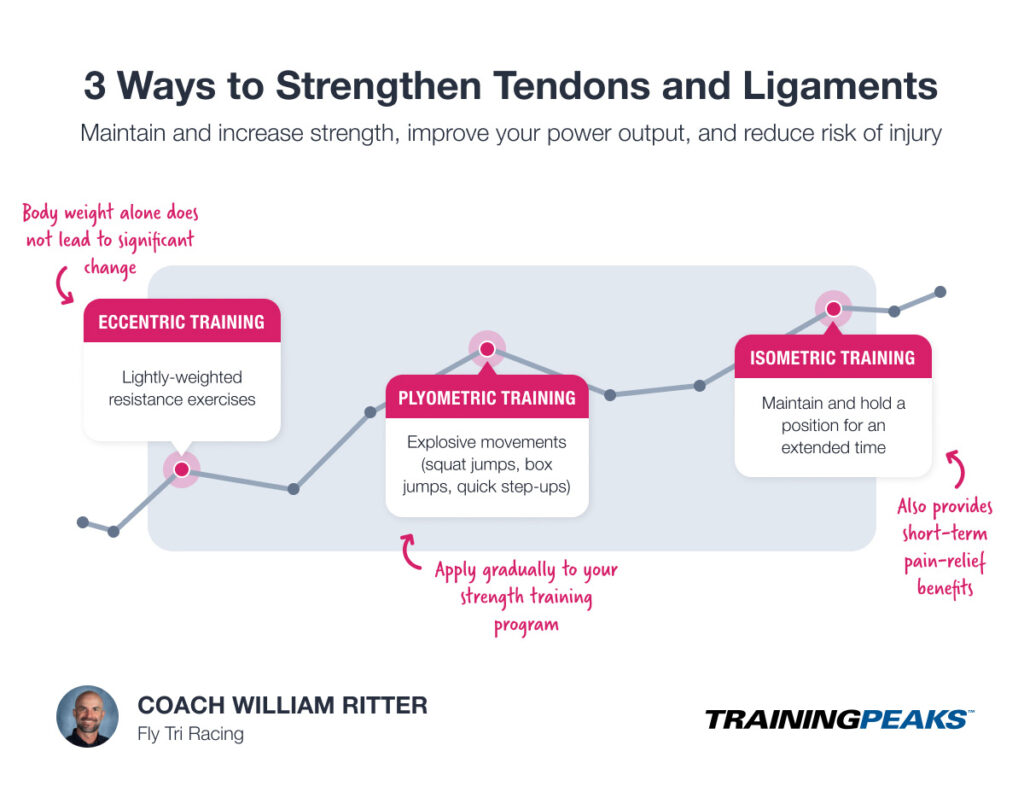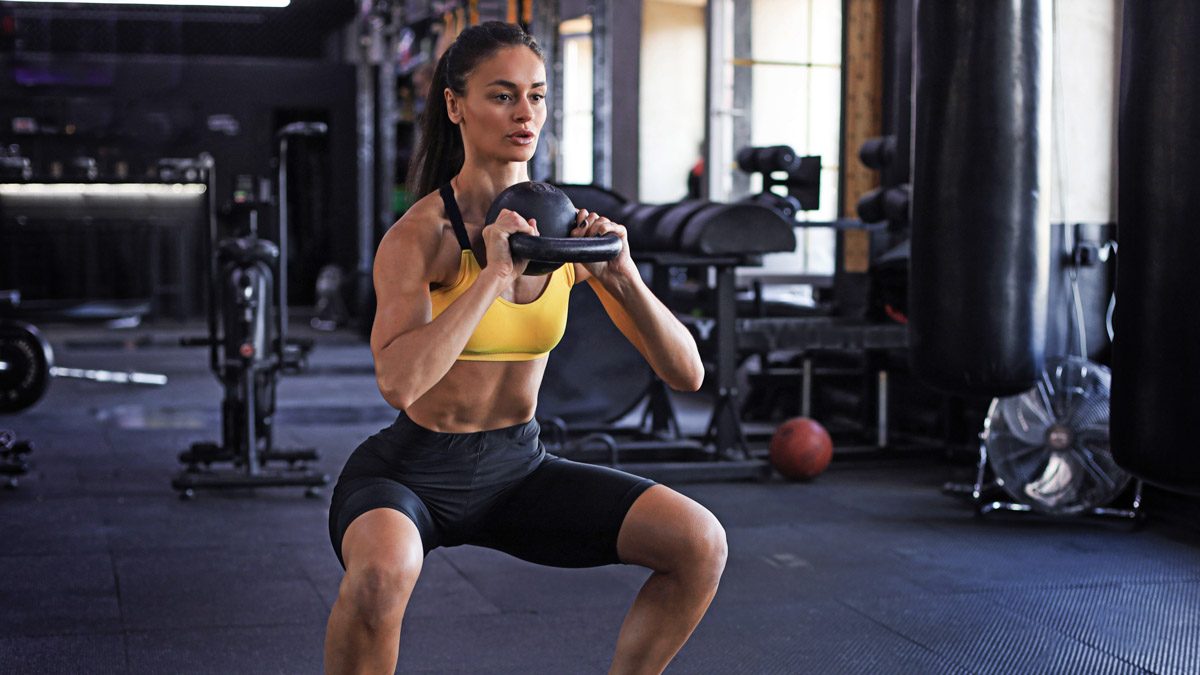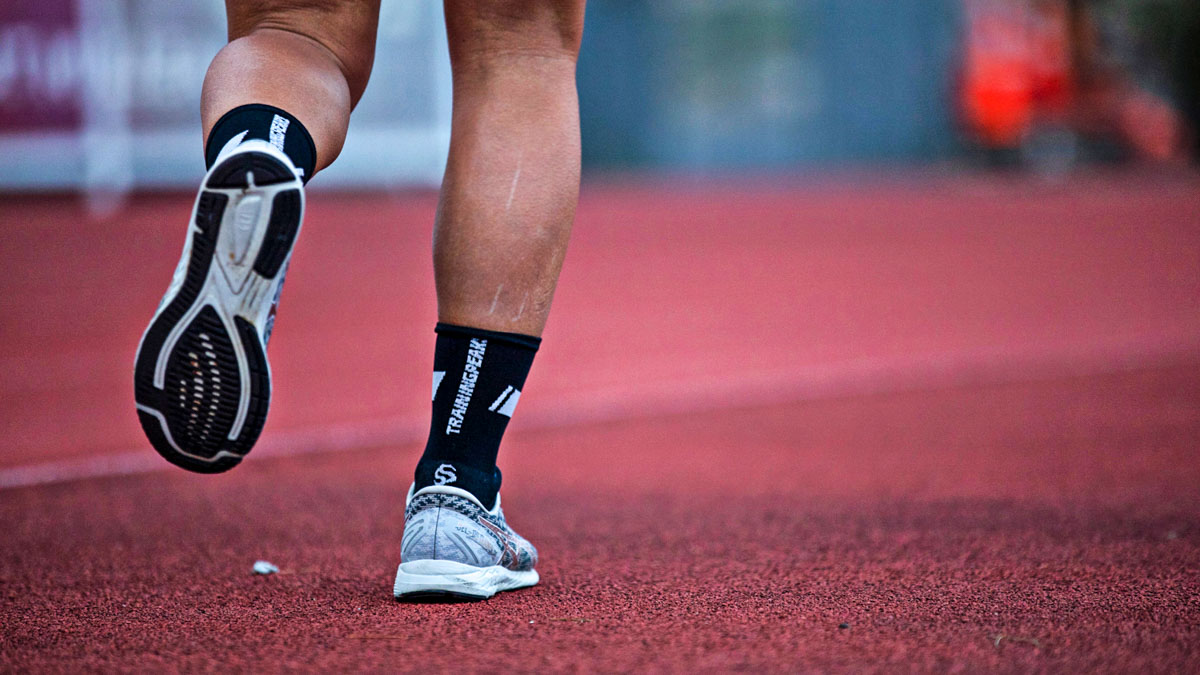Strength training is usually associated with building muscle, but as an endurance athlete, you also need to build connective tissue strength. Your tendons, in particular, are responsible for transferring force generated by muscle contraction to bone to whatever you are trying to move or push against (like a weight, a pedal, or the ground). This movement of force creates an elastic recoil effect known as the stretch-shortening cycle (SSC) that helps you to run, jump, and make a variety of other movements. In this article, we’ll discuss the importance of connective tissue, how to strengthen tendons and ligaments, and how that can help improve your athletic performance.
Why Tendon Health Matters
Tendons connect bone to muscle. They allow us to move our muscles, absorb impact, and transfer force. Ligaments connect bone to bone, keeping our joints stable and in place.
Tendons and ligaments provide an elastic recoil response that allows us to run, jump, and lift heavy things quickly. As we age, tendon elasticity decreases. Connective tissue injuries mostly occur for endurance athletes due to the repeated, forward and backward (sagittal plane) motions of running or pedaling. Sitting for hours at a desk further weakens tendons and ligaments. So how do you increase tendon elasticity?
Can You Strengthen Tendons?
The short answer is yes. But, when compared to changes in muscle tissue, which can take just days to improve, the tendon’s structural tissue can take weeks or months to adapt. One study showed that it took two months before tendon stiffness improved, and this also included changes in collagen structure and synthesis. This is why tendon and ligament injuries take longer to heal — there is limited blood supply going to these connective tissues. Thus, it also takes more time for a tendon to adapt to training stress compared to muscles.
Tendon (and ligament) strength and tendon (and ligament) stiffness are often used interchangeably because an overly elastic (non-stiff) tendon is weaker and more susceptible to injury. Assuming sufficient strength to be injury resistant, there is still a range of stiffness/elasticity a given tendon can develop. The optimal stiffness for a given tendon will be determined by the forces it experiences, which is determined by its anatomical location and the specifics of the athlete’s main sport. Having a well-balanced strength training program can keep these connective tissues appropriately “snappy” for a given sport. In addition to preventing injury this can lead to improved running economy through improvements in aspects of the stride cycle and improved efficiency in the pedal stroke for cyclists.
How to Strengthen Tendons and Ligaments With Connective Tissue Exercises
So how do we build strength in our connective tissues? There are many ways to strengthen tendons, but for the purpose of this article, we’ll focus on doing so through strength training. This includes eccentric training, plyometrics, and isometric forces.

1. Eccentric Training
Eccentric training can be done with lighter weights or bodyweight where the high forces are generated through a lengthening (eccentric) contraction (such as landing on the floor from the top of a box jump into a deep squat or when you lower your heels back down after the raise in a slow and deliberate manner, that is an eccentric movement.) or with heavier weights and a focus on lowering them as slowly as possible.
Multiple studies have been done on eccentric training and tendon stiffness. These studies found that tendon stiffness does not change, or improves minimally, with body weight alone. Instead, weighted protocols on a single leg resulted in better improvement in tendon stiffness.
A few examples of eccentric training exercises that can help strengthen tendons and ligaments include:
- Eccentric heel raises
- Single-leg squats
- Single-leg deadlifts
2. Plyometrics
Explosive movements like plyometrics — such as squat jumps, single leg hops, depth jumps, box jumps, and quick feet step-ups — may help build tendon strength and make your legs feel a little more snappy, as long as you don’t overdo it.
Plyometrics use the tendon’s recoil response to execute explosive movements. Take, for example, a single-leg jump. The Achilles tendon lengthens and then releases energy as it recoils or shortens. Over time, this action becomes more efficient.
Plyometrics should be phased in and applied gradually to one’s strength training program. A 14-week study of plyometric training determined that, over time, there was less energy dissipating as heat and more energy being applied to the recoil of the tendon, allowing for an increase in the rate of our movements.
Examples of plyometric leg exercises that can reduce your risk of injury can be found here.
Plyometric training can have a significant impact on performance and injury resistance, but due to the high loads and sometimes complex movements associated with plyometric training, it is critical to develop a deliberate progression plan based on your sport and your experience with this type of training.
3. Isometric Training
Isometric contractions occur when the muscle is held in a constant or static position. Examples of isometric exercises include wall sits, calf holds, planks, or any position that you can maintain and hold for an extended time.
One study concluded that isometric training can provide short-term pain-relief benefits in the middle of the competitive season. Isometric training may also be beneficial at the beginning of a strength training program or rehab for improving stabilization. This would be very important before doing heavy resistance training as you need to know how to put your joints in a stable position. So while structurally heavy resistance training and eccentric exercises have been shown to be more effective in building overall tendon stiffness, isometric training can be more effective targeting the healthy fibers in a tendon with previous tendinopathy or that is otherwise painful so that it can begin to remodel itself and eventually reduce or eliminate pain
Endurance athletes should spend time year-round integrating strength training into their training program. This will help maintain or even increase the strength of your connective tissues, steadily improve your power output, and reduce injury risk without having to increase volume or intensity.
References
(2018, July 26). What are ligaments? Retrieved from https://www.ncbi.nlm.nih.gov/books/NBK525790/
Finni, T. et al. (2012, October 18). Viewpoint: On the hysteresis in the human Achilles tendon. Retrieved from https://pubmed.ncbi.nlm.nih.gov/23085961/
Fouré, A. et al. (2010, June 24). Plyometric training effects on Achilles tendon stiffness and dissipative properties. Retrieved from https://pubmed.ncbi.nlm.nih.gov/20576842/
Kubo, K. et al. (2011, November 22). Time course of changes in the human Achilles tendon properties and metabolism during training and detraining in vivo. Retrieved from https://pubmed.ncbi.nlm.nih.gov/22105708/
Lim, H.Y. & Wong, S.H. (2018, July 4). Effects of isometric, eccentric, or heavy slow resistance exercises on pain and function in individuals with patellar tendinopathy: A systematic review. Retrieved from https://pubmed.ncbi.nlm.nih.gov/29972281/
Quinlan, J.I. et al. (2019, August 20). Tendon Adaptations to Eccentric Exercise and the Implications for Older Adults. Retrieved from ncbi.nlm.nih.gov/pmc/articles/PMC7739434/









